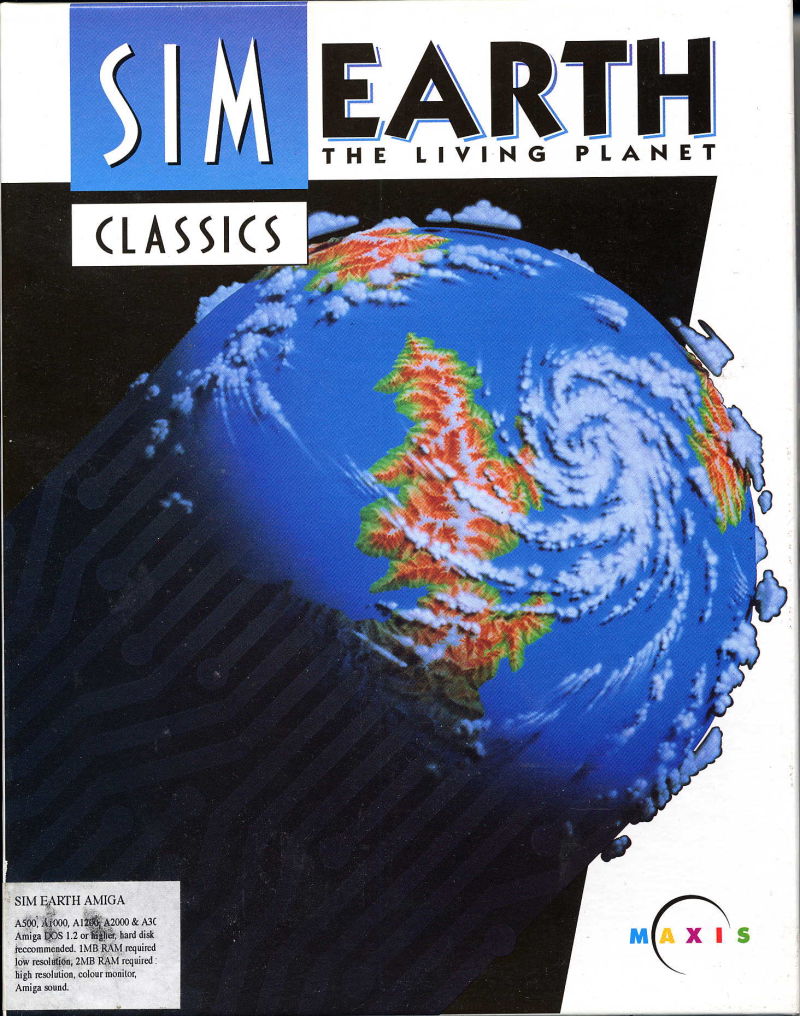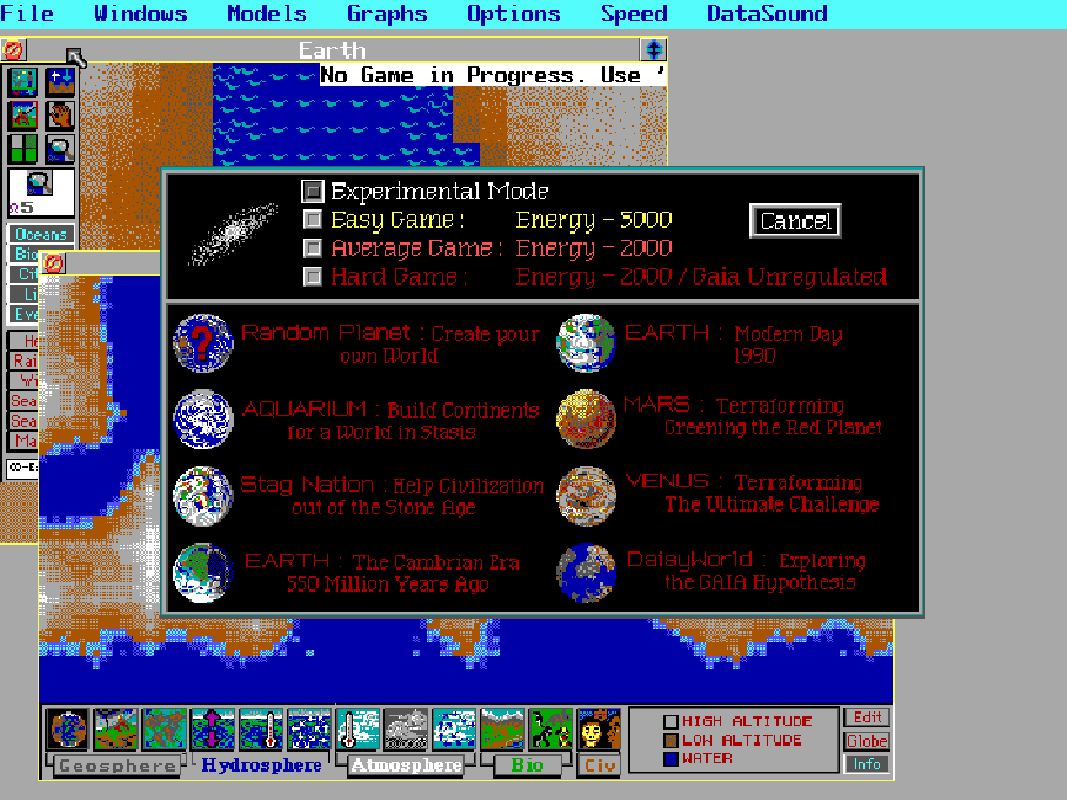Part of the fun of working with the Science Museum Group’s collections is the rediscovery of things that have been long forgotten.
One such thing was a copy of the cult computer game SimEarth, which had been languishing in a box of miscellaneous objects in the archives. It had first come to the Museum sometime in the early 1990s, shortly after its initial release.

SimEarth was the second in Will Wright and Maxis’ extremely successful ‘sim’ series of games (including The Sims), following the release of SimCity in 1989.
Wright pioneered this genre of what he called ‘system simulation’ games. In SimEarth its players were invited to take control of a planetary ecosystem, tinkering with environmental factors such as atmosphere, temperature, and landmass, to see how their decisions influenced the evolution of living organisms.
The game’s subtitle ‘The Living Planet’ nods to the key scientific inspiration behind SimEarth: James Lovelock and his Gaia Hypothesis.
The theory asserts that living organisms and their inorganic surroundings have evolved together as a single living system that greatly affects the chemistry and conditions of Earth’s surface.
In fact, Lovelock contributed to the game’s design. One of the scenarios that can be played in the game is Lovelock’s own ‘Daisyworld’ computer simulation, a world in which the only lifeforms are daisies.

Perhaps unusually for a commercial computer game, the SimEarth manual contains an entire introduction to Earth science! It also contains a section on Gaia authored by Lovelock. Some climate scientists have even attributed their careers to playing the game when they were younger.
The copy we found in our stores is the first EU release of the game, published by Ocean in 1990, for the IBM/Tandy PC platform.
It came with a delightful note from 1993 indicating it was free of viruses. They added it was ‘very good … excellent graphics’ if a ‘little complex’, reflecting that ‘the average 12-year-old would probably have no problems’.
It seems fitting that the Science Museum acquired a computer game inspired by Lovelock, who as a child had himself been inspired by his visits here. The Science Museum’s Collecting Board deemed it a worthy addition as it complemented the museum’s existing Lovelock archive.You can listen to an interview between the Museum and Lovelock here.
Do you have any memories of playing SimEarth? We’d love to hear them in the comments!
Discover more retro games at Power UP this Easter.
